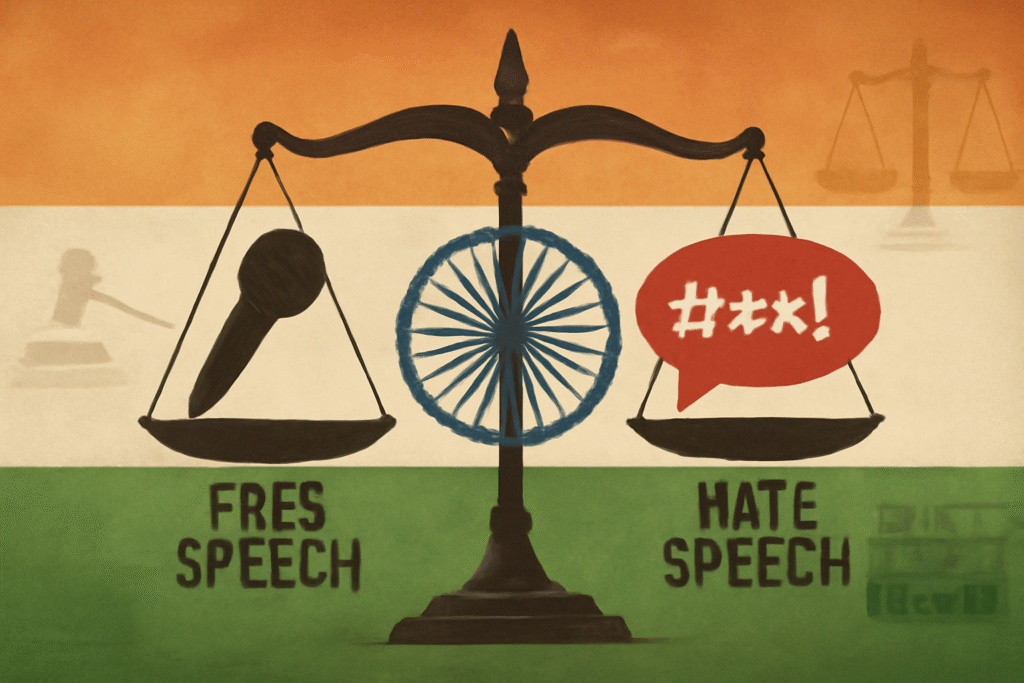Published On: October 15th 2025
Authored By: Marthala Joshika Reddy
SASTRA DEEMED UNIVERSITY
Abstract
The rights of women in matrimonial and property disputes represent an important dimension of the evolving jurisprudential and legislative understanding relating to gender equality in India. Over the past 20 years, a mix of statutory enactments and judicial pronouncements have resulted in a greater recognition of women’s entitlements in marriage, including rights to maintenance, to residence, and proprietary entitlements. For example, the statutory framework set out in the Protection of Women from Domestic Violence Act, 2005, and Section 125 of the Code of Criminal Procedure, 1973, has facilitated civil remedies through which women can directly access protection against economic deprivation and domestic violence. The Indian courts have recently expanded and deepened rights to maintenance by setting out women’s entitlement to maintenance as an independent force and a right to reside in the matrimonial home, notwithstanding an abusive domestic situation involving other family members[1]. That said, substantive equality remains elusive; women still face procedural challenges, societal stigma, and limits on ownership in matrimonial property[2]. This article will critically examine the statutory protections and case law that shape women’s rights in these disputes and point to some ongoing barriers to women’s rights and opportunities for continued legal reform. It concludes that a comprehensive approach, blending strong legal rights, effective enforcement mechanisms, and social change is necessary for women caught in matrimonial and property disputes to achieve gender justice and economic security.
Introduction
Women’s rights regarding marriage and property has historically played an important role in both legal conversations and putting reform into action in India. While constitutional provisions provide for equality and dignity for all, the reality for the majority of women especially those who are experiencing marital difficulties, or claim property rights is challenging because of, among others, legal indeterminacies, and entrenched patriarchal ideologies[3]. Though India’s legal framework has evolved considerably in terms of women’s rights, women must negotiate a complicated terrain of personal laws, statutory reforms, and judicial interpretations when attempting to assert rights related to the family and property[4]. Historically speaking, women in India have been largely barred from the ownership of family property, afforded little to no real access to financial resources as a breakdown of a marriage occurs, and faced with an economic void after a divorce or death of spouse. The intention behind statutes like The Protection of Women from Domestic Violence Act 2005 and amendments to the Hindu Succession Act 1956, is to amend these systemic injustices by establishing rights to maintenance, rights to possession or residence, as well as rights of inheritance within the law[5]. Critically, these rights include an emerging tendency by courts to interpret the right to shelter, maintenance, and life with dignity as components of the right to life under Article 21 of the Constitution of India[6].
Although these developments provide hope towards effective gender equality in matrimonial and property disputes, the challenges ahead on the road to true gender equality can still be difficult. Procedural delays, variations in the application of law across jurisdictions, and social and cultural impediments are all factors which can undermine women’s ability to exercise or enforce their statutory rights. This article will consider the rights of women in matrimonial and property disputes, both statutory and case law, in order to reflect on accomplishments towards equality, and key obstacles towards substantive equality for women in matrimonial and property disputes.
Statutory Protection of Women’s Rights in Matrimonial Disputes
The legal context in India concerning women’s rights in matrimonial disputes has developed extensively through legislative and judicial interventions. The legal principles which primarily underpin these rights relate to matrimonial financial support, security of accommodation, and protection from maltreatment.
Maintenance: Right to Financial Support
Section 125 of the Code of Criminal Procedure, 1973 (CrPC) is the primary legislative tool for securing maintenance for women in circumstances when they cannot support themselves after separation or divorce. This provision allows magistrates to make directions to husbands, fathers, or relatives, for a reasonable maintenance of destitute women, so they do not become impoverished[7]. This statutory provision is available to all married women regardless of religion, which like the provisions relating to maintenance in the Family Courts Act, is based on statutory law rather than personal law. The Supreme Court has adopted the broadest possible construction of maintenance payments, insisting, the object of maintenance is to ensure that the wife can maintain herself with some reasonable standard of living so as to live with dignity and to avoid any conduct on the part of the husband depriving the wife of that dignified existence whilst at the same time enforcing the constitutional recognition of her right to life and personal liberty under Article 21[8].
Recent decisions of the courts have established that the entitlement of a woman to maintenance is not dependent on her having any obligation to continue to reside or cohabit with the husband. In this regard, the court held that an order for restitution of conjugal rights could not be used to excuse the failure to pay maintenance to a woman who refused to live with a husband[9]. This development of jurisprudence strengthens the autonomy of women by ensuring they had the protection of the State against economic deprivation, which is significant even where there is no prospect of the husband and wife continuing a relationship which legally marries them.
Right to Reside in the Matrimonial Home
The Protection of Women from Domestic Violence Act, 2005 (PWDVA) was a game-changer when it recognized women’s right to stay put in the shared household, regardless of ownership or tenancy[10]. Under Section 17, women, including wives, daughters, widows, and sisters, are entitled to residence in the matrimonial home for protection and safety. This right is important because historically, women, when estranged, faced eviction from the household and were made homeless[11].
The courts have also stressed that the right to reside under the PWDVA is a substantive right and not reliant solely on legal title to the property. The Kerala High Court in 2025 judgement stated that the widow cannot be evicted from the matrimonial home by in-laws and that eviction is domestic violence and would not be permitted in accordance with the law[12]. The PWDVA provides remedies for women through protection orders and, operationally, women have protection orders within 60 days, affording women protection so they can stay somewhere for the time it takes for the civil litigant to litigate to find an ultimate solution so they can live in dignity in safety.
Property Rights of Women in Matrimonial Disputes
Property disputes are a major source of conflict that arises as a result of separation or widowhood. Traditionally women’s property rights have been bounded by social custom and even patriarchy in the property regime, however there are legal reforms and judicial re-interpretations that are actively reshaping this landscape.
The Hindu Succession (Amendment) Act, 2005 represented ground-breaking adjustments to women’s inheritance rights. The Act affords daughter’s equal coparcenary rights in ancestral property, meaning that daughters enjoy the same rights and obligations as their brothers[13]. This Act categorically repealed the discriminatory provisions barring women from inheriting coparcenary rights; it clarified that there is no distinction between males and females as heirs, establishing gender equality consistent with constitutional mandates in referring to heirs.
Despite this, the amendments are primarily about natal family property, while women do not typically own direct ownership rights in the matrimonial home which normally vest with the husband. Absent the ability of women to obtain direct ownership rights to marital property except in the case of jointly owned property or property gifted to them, women can only demonstrate some right to ownership when the property is owned without the benefit of joint ownership (not a joint property) when the husband owns the property outright. Women will be stripped of ownership rights, unless courts recognize interesting legal constructs with similar effect called the “constructive trust” or “equitable lien”, defined as an interest recognized by the court when they contributed to the acquisition of, or improvement of the home property[14].
Judicial Responses and Emerging Trends
Judicial Activism and Gender Sensitivity
In recent years, courts in India have shown greater reflexivity on issues of gender, particularly in regard to the expanded interpretations of maintenance, residence, and property rights, as they relate to women’s lived situations. This has resulted in courts awarding maintenance even where the woman is otherwise earning for herself, but not at a standard of living to which she was accustomed[15]. Courts have also recognized psychological cruelty and economic abuse as grounds for remedying matrimonial laws[16].
Landmark Cases
In 2025, the Kerala High Court’s seminal decision proclaimed widows’ right to the matrimonial home upon the husband’s death, limiting the ability of in-laws to evict widows[17]. The ruling of the Supreme Court in 2025 on maintenance disentangled conjugal rights from economic rights that would require women to reunite or reconcile coerced by economic inertia[18].
These rulings demonstrate a jurisprudential turn towards substantive equality and dignifying women by recognizing their rights under the law and not simply formalistic personal law criteria.
Challenges and the Road Ahead
Even with progressive laws and positive rulings, several issues remain:
Implementation Gaps: Enforcement delays for maintenance and protection orders can exacerbate the woman’s anxiety. Many women are uninformed about a legal aid process or cannot find legal representation to help them press their claims.
Socio-Cultural Barriers: Patriarchal structures continue to delegitimize women’s claims. Attribution only makes things worse because it impedes women from lodging complaints or seeking the use of courts to help them intervene in their family’s issues. This is, of course, exacerbated in rural frontiers where social stigma is more acute.
Inconsistency: There is a lack of uniformity in personal laws in relation to religion, which contribute to inconsistent access to protective orders and complex litigation when seeking orders for injunctions from Local Owners, which require a workable legal family code.
Property Rights: The lack of clear matrimonial property regime lead to women’s disempowerment with regard to proving ownership or contribution in cases where informal claims were made.
Recommended actions to improve upon the above issues include more effective legal literacy campaigns, building enforcement agencies, training judges on gender stereotyping, and reforming laws to equate the distribution of marital assets.
Conclusion
Significant developments have been witnessed regarding women’s rights in matrimonial and property disputes through legislative amendments and progressive judicial interpretations. Such statutes as the Protection of Women from Domestic Violence and provisions for maintenance under the Criminal Procedure Code render stronger women in their economic security and right of residence in the matrimonial home. The judicial pronouncements have further stressed womanly autonomy and dignity, thus extending women’s rights outside traditional bounds of personal laws. Yet, challenges remain-they include delay in implementation, socio-cultural resistance, and gaps in recognition of proprietary rights, primarily concerning the matrimonial home and the joint assets.
Real gender justice in matrimonial and property dispute proceedings thus requires the simultaneous existence of an enforceable legal framework, genuine prosecutory machinery, and societal changes.
References
[1] Protection of Women from Domestic Violence Act 2005, s.17; Kerala HC, ‘Widow Can Stay in Matrimonial Home’ (2025)
[2] Hindu Succession (Amendment) Act 2005; ‘The Right to Tell Matrimonial Home as a Property Right’ (NLSIR, 2021)
[3] Constitution of India 1950, arts 14 and 15.
[4] S.S. Dhillion, ‘Women’s Rights in Matrimonial and Property Disputes: Legal Framework and Challenges’ (2023) 19 NLSIR 61.
[5] Protection of Women from Domestic Violence Act 2005; Hindu Succession (Amendment) Act 2005.
[6] Article 21, Constitution of India; Danial Latifi v Union of India AIR 2001 SC 3958.
[7] Code of Criminal Procedure 1973, s 125.
[8]Danial Latifi v Union of India AIR 2001 SC 3958
[9] Supreme Court of India, Lalita Kumari v Government of Uttar Pradesh AIR 2025 SC 1120.
[10] Protection of Women from Domestic Violence Act 2005, s 17.
[11] Ibid.
[12]Kerala High Court, ‘Widow Can Stay in Matrimonial Home’ (2025)
[13] Hindu Succession (Amendment) Act 2005
[14] The Right to Tell Matrimonial Home as a Property Right,’ National Law School of India Review (2021)
[15] Supreme Court of India, D. Velusamy v D. Patchaiammal AIR 2011 SC 239.
[16] Protection of Women from Domestic Violence Act 2005, s 3.
[17] Kerala High Court (2025) supra n 6.
[18] Supreme Court of India (2025) supra n 3.




